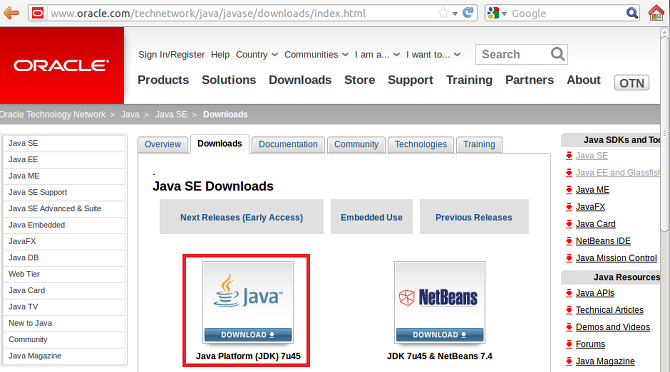34.3 Enhancements in JDK 7 Update 40
The JDK 7u40 release includes the following enhancements:
For enterprises that provide a common execution environment and manage the applications that employees access, the Deployment Rule Set feature enables the creation of rules that allow some applications to be run without security prompts while automatically blocking other applications. This feature is intended to be used internally in an organization. See Chapter 28, 'Deployment Rule Set' for more information.
When a RIA is started, the JRE is checked to see if it is expired or below the security baseline. If so, the user is warned and given the opportunity to upgrade the JRE. For enterprises that manage the update process of user's systems, the
deployment.expiration.check.enabledproperty can be set to suppress this check. See Chapter 21, 'Deployment Configuration File and Properties' for more information.
JDK 7u45 contains Olson time zone data version 2013d. For more information, refer to Timezone Data Versions in the JRE Software. Security Baselines. The security baselines for the Java Runtime Environment (JRE) at the time of the release of JDK 7u45 are specified in the following table. Java SE ダウンロードの最新版はこちら(USサイト)からダウンロードをお願いします。 2019年4月より前までにリリースされた Java SEソフトウエアには、 「Oracle Binary Code License Agreement for the Java SE Platform Products and JavaFX」が適用されます。 日本語参考訳をご参照の上、ライセンス条項に同意できる方.
In addition, Chapter 24, 'Rich Internet Application Deployment Process' provides a look at how the deployment of RIAs is handled.

Java Jdk 7u45 Download
Installation of the Java 2 Software Development Kit
/logitech-harmony-515-software-mac.html.
Jdk 7u45 With Netbeans 7.4 Download
Please note that if you have set up Eclipse using my instructions earlier in the year, you should have a working JDK, so you can skip this step. Go straight to 'Testing The JDK' below. These instructions are still present in case that something goes wrong.
The latest release of the Java 2 Software Development Kit is Java JDK 7. To install this on your home PC, please take the following steps:
Download the Java Development Kit from: java.oracle.com. Follow the link on the right hand side of the page for 'New Downloads' -> 'Java SE 7 Update 45' (or the equivalent). Choose the 'Java Platform (JDK) 7u45' (or equivalent). Click the radio item to 'Accept License Agreement' and then choose the version for your machine. Mine is a Windows 7 64-bit installation, so I chose 'jdk-7u45-windows-x64.exe'
Download the J2SE 7.0 Documentation also (http://www.oracle.com/technetwork/java/javase/downloads/index.html) if you do not have a stable internet connection.
Execute the installation (.exe) file and allow it to complete
a full install. Choose the default directory.
Extract the documentation to a suitable directory, for example:
c:jdk7docsusing a.zipextractor. If you do not have one installed, use winzip or 7zip etc.You should not have to do this step - test first! Set your PATH to include the
bindirectory of the installed folder (e.g.c:jdk7bin). See Figure 5.3, “Setting the Java Environment Variables.”.You should not have to do this step - test first! Set a new CLASSPATH environment variable to include the file
c:jdk7jrelibrt.jarand the current directory - so it should have the formSee Figure 5.3, “Setting the Java Environment Variables.”. This is my setting on Windows XP Professional (very similar for Windows 7/8)
Figure 5.3. Setting the Java Environment Variables.